Phuong Duc is small village on the southern bank of the Perfume River. The village is where many national treasures were made, including the nine tripod cauldrons, the nine holy cannons, and the giant bell of Thien Mu pagoda.
Located about 3km southwest of the Hue citadel, Phuong Duc (guild of casters) is a renowned bronze casting village which originated from a guild of bronze casters organized during the Nguyen Dynasty.
According to historical records, bronze casting in Hue dates back to the early 17th century during the regime of the Nguyen Lords. The father of the craft was Nguyen Van Luong, a native of Bac Ninh province. The grave and temple dedicated to the father of the bronze casting craft in Phuong Duc is a national cultural and historical relic.
Between the 17th and 19th centuries, the Nguyen lords and kings gathered skilled bronze craftsmen from around the country to build Hue citadel, and to cast weapons, coins and utilities used in the court. This began the formation and development of bronze casting in Hue.
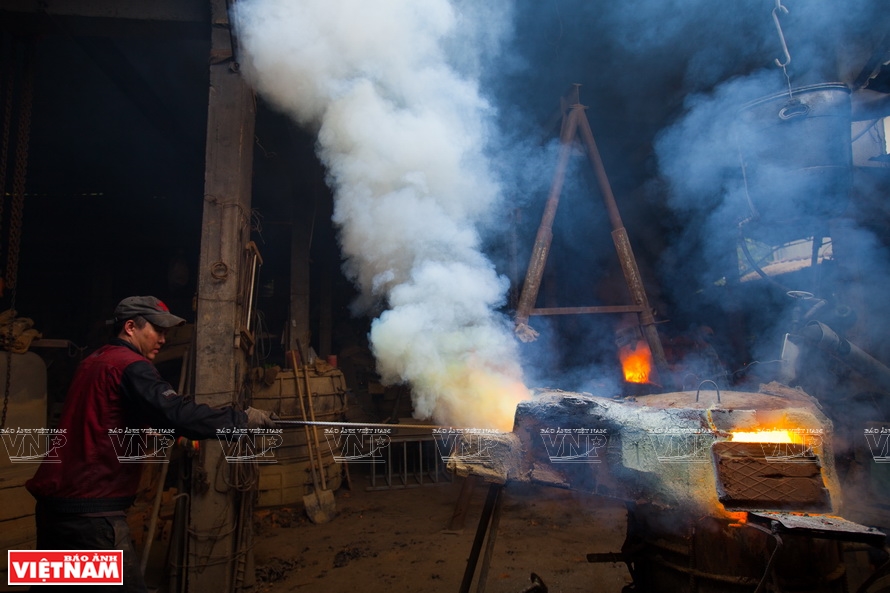 Inside a bronze casting workshop in Hue. Photo: Nguyen Luan Inside a bronze casting workshop in Hue. Photo: Nguyen Luan
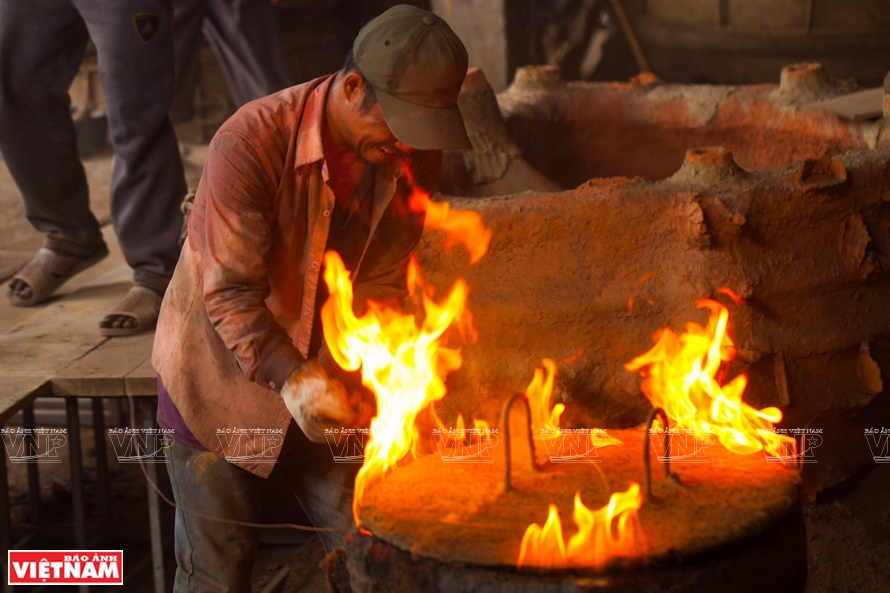
Temperature inside the kiln reaches thousands of degrees Celsius. Photo: Nguyen Luan
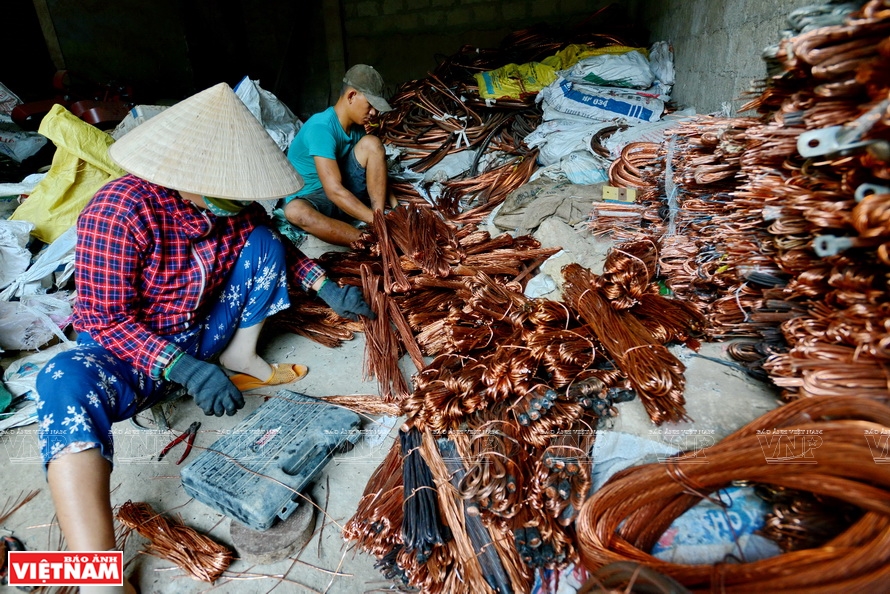
Material for bronze casting. Photo: Thanh Hoa
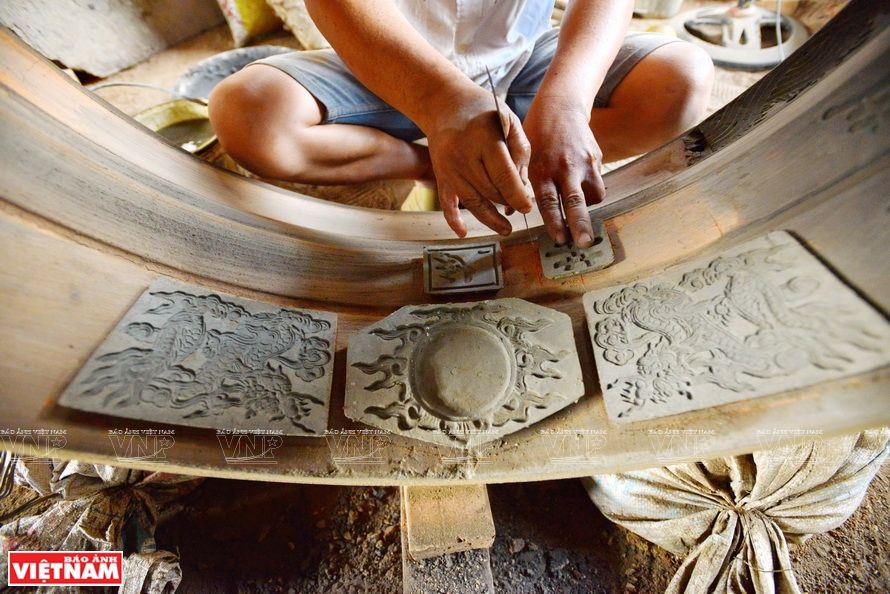
Carving patterns on the mold. Photo: Thanh Hoa
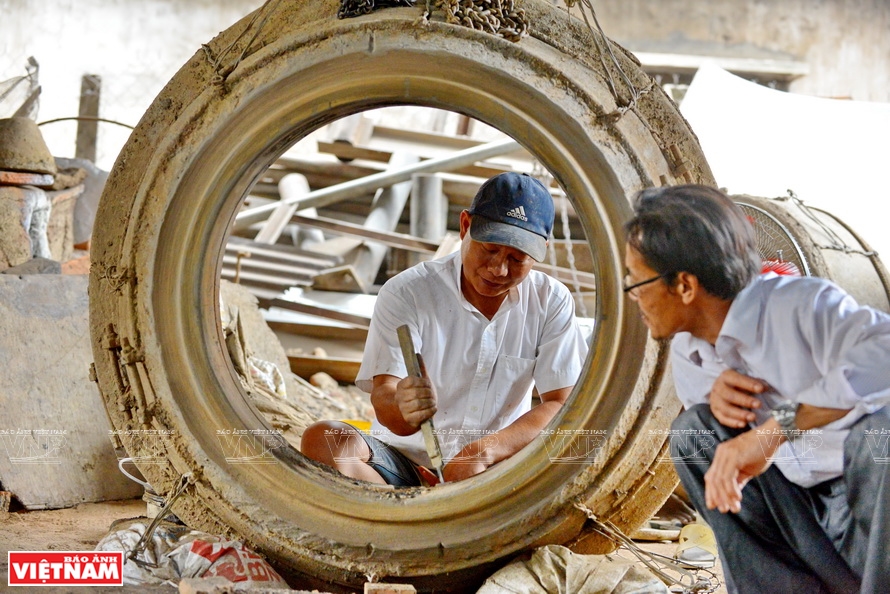
Nguyen Van Quy, a skilled bronze craftsman in Phuong Duc village. Photo: Thanh Hoa
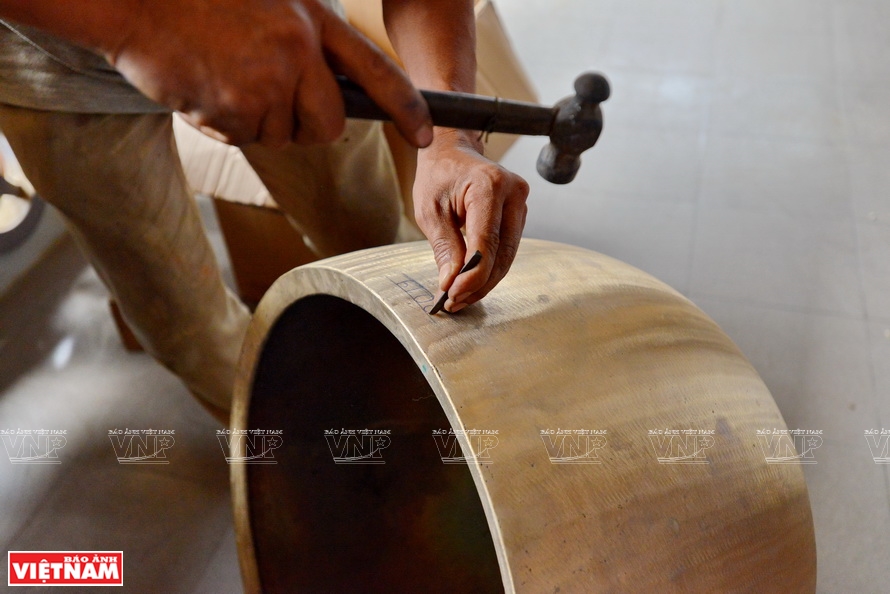
Carving the year of casting on a small bell.
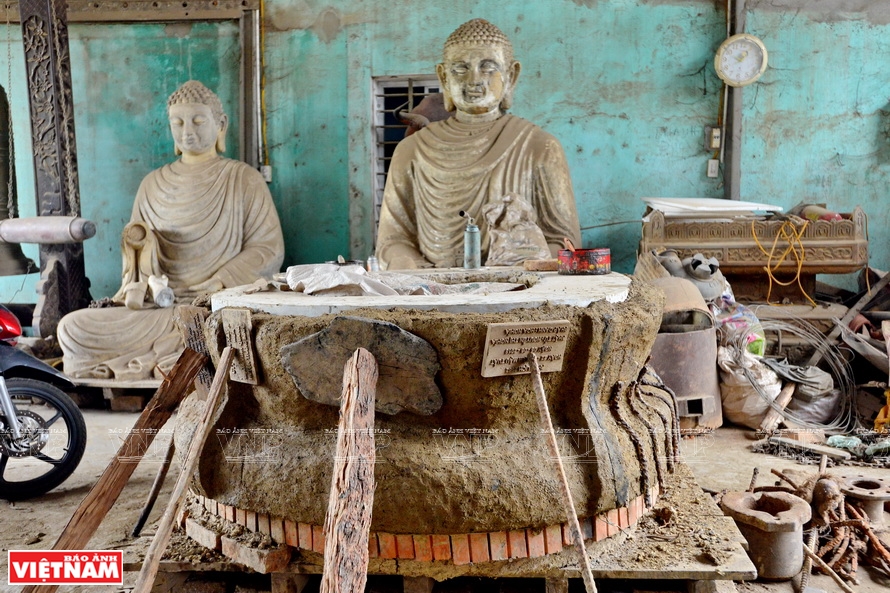
A mold is made from clay and special additives. Photo: Thanh Hoa
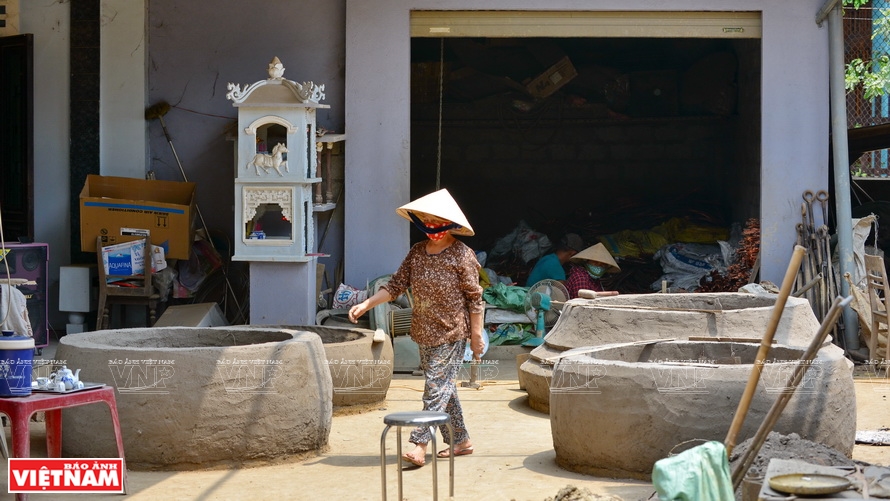
Molds are dried befefore casting. Photo: Thanh Hoa

Pouring fused bronze in the mold. Photo: Nguyen Luan
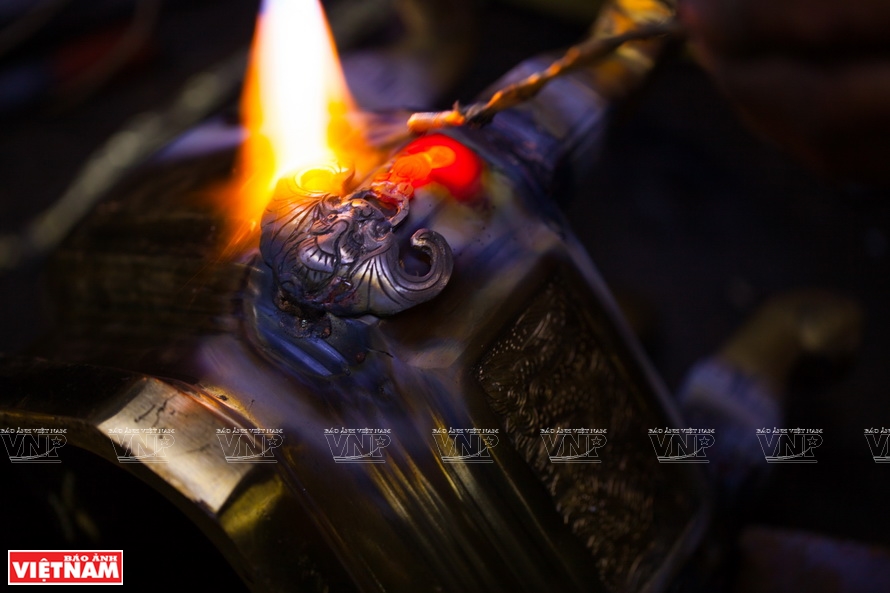
Soldering bronze. Photo: Nguyen Luan
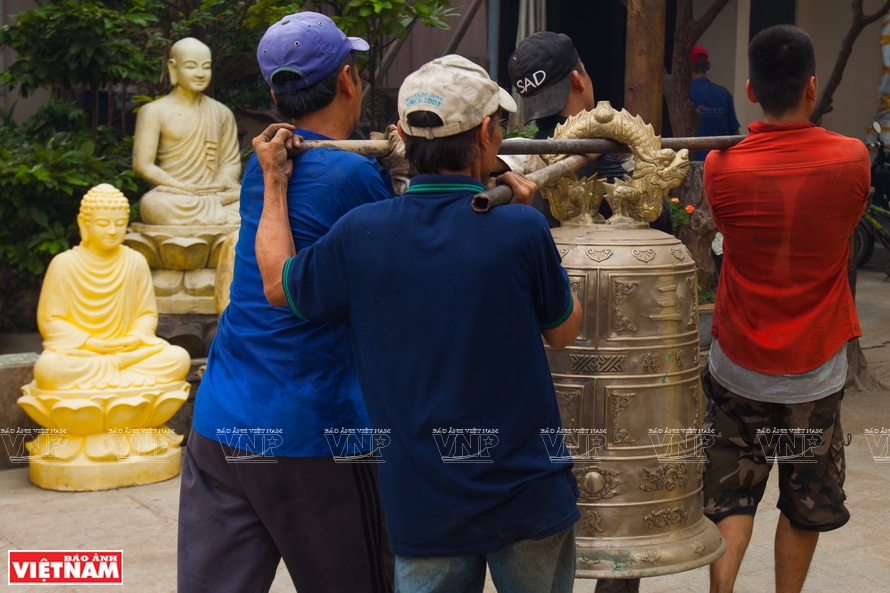
Bronze bell - a traditional product of Phuong Duc village. Photo: Nguyen Luan |
During these two centuries, the craft flourished in Hue. Many items made by Phuong Duc craftsmen later became tangible cultural heritages of Hue, many of which were recognized as national treasures by the State. They include a set of bronze urns, cast between 1659 and 1684 under the reign of the Nguyen Lord; the giant bell of Thien Mu pagoda, cast in 1710; the nine tripod cauldrons placed in front of The Mieu yard in Hue citadel, cast from 1835 to 1837; and the nine holy cannons placed at Ngo Mon (meridian) gate, cast between 1803 and 1804.
Phuong Duc bronze items are sophisticated, beautiful and durable, showing the talent of their craftsmen many of whom are known nationwide and abroad. The artisans include Nguyen Van Sinh, Nguyen Van Vien, Nguyen Van Thuan, Nguyen Van De, Nguyen Van Trai, Nguyen Van Tue, Nguyen Van Niem, and Le Van Son.
In addition to traditional products such as bells, statues, incense burners, and lamps, Phuong Duc craftsmen have cast bronze pieces of art of high value. They include a statue of Tran Hung Dao, which is 10.2 m high and weighs 21.6 tons, placed at Vi Hoang park in Nam Dinh city; a 4.3m high statue of Gautama Buddha at Kim Thanh pagoda in Gia Lai province; a bronze drum at Quang Trung museum in Binh Dinh province; and the great bell of Bai Dinh pagoda in Ninh Binh province, which is the largest bell in Southeast Asia with a height of 5.5m, a diameter of 3.7m and a weight of 36 tons.
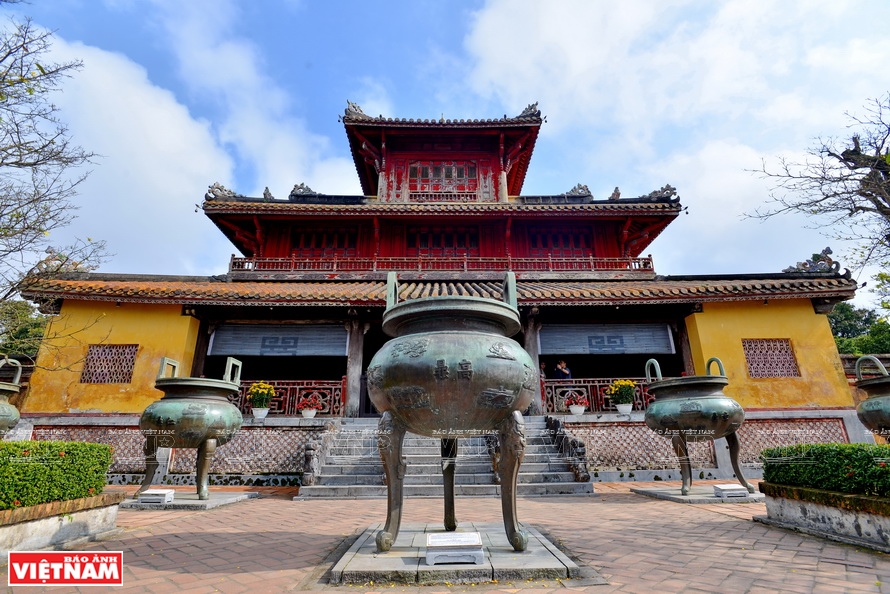
The nine tripod cauldrons placed in The Mieu yard, each of which weighs more than 2 tons. Photo: Thanh Hoa
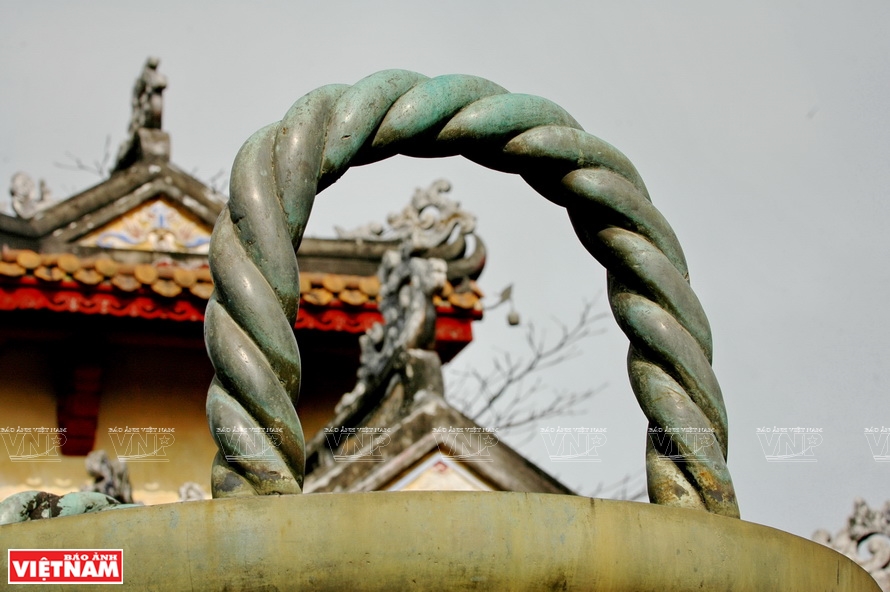
Straps of a big cauldron was casted in the Nguyen dynastry. Photo: Thanh Hoa
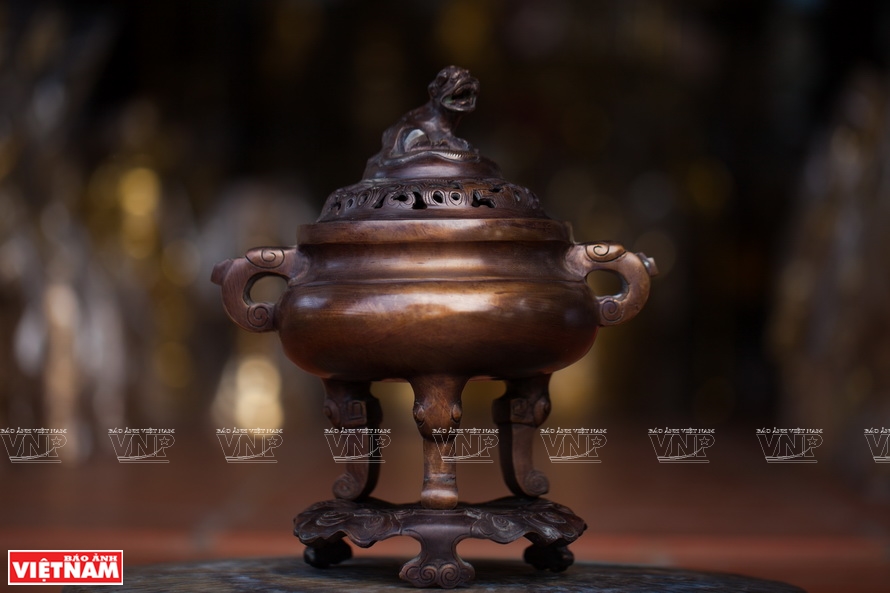
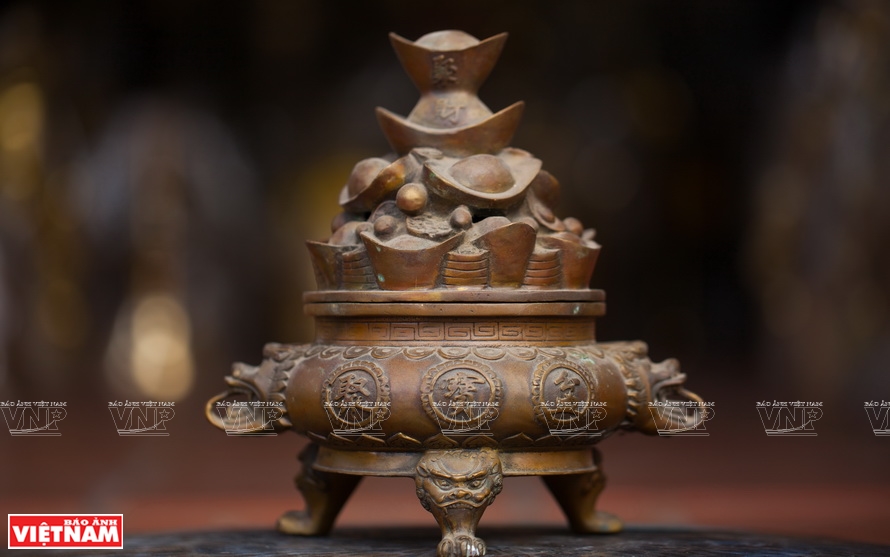
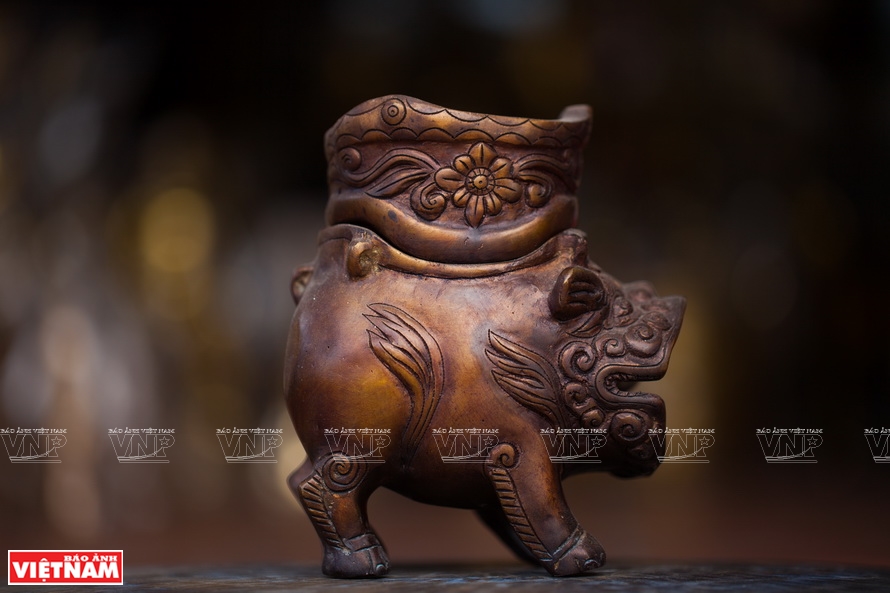
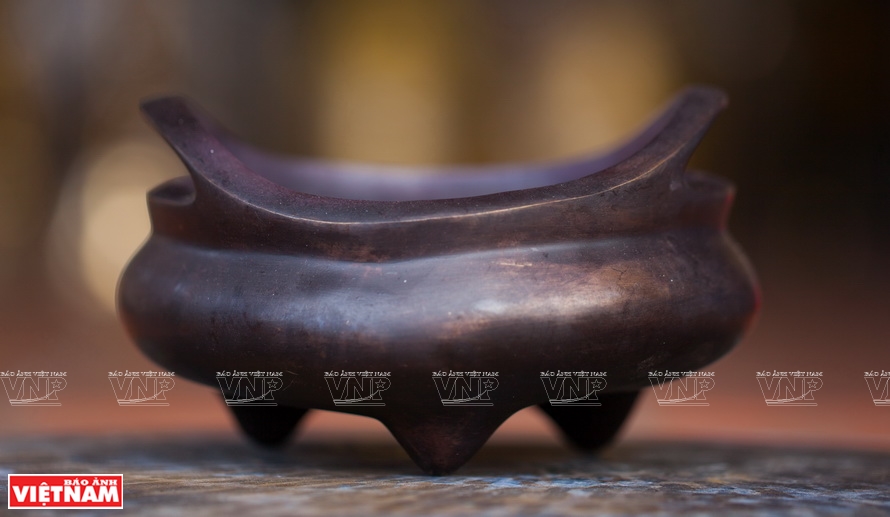
Bronze products made in Phuong Duc. Photo: Nguyen Luan |
Phuong Duc now has 60 bronze-casting families which create about 300 regular jobs. Its products are not only popular at home but also exported to the US, France, Japan, China, India and Nepal with a total export value of more than 400,000 US dollars/year.
After four centuries, Hue bronze casters still keep alive their traditional craft which has made national treasures left for their descendants.
Story: Thanh Hoa - Photos: Thanh Hoa & Nguyen Luan